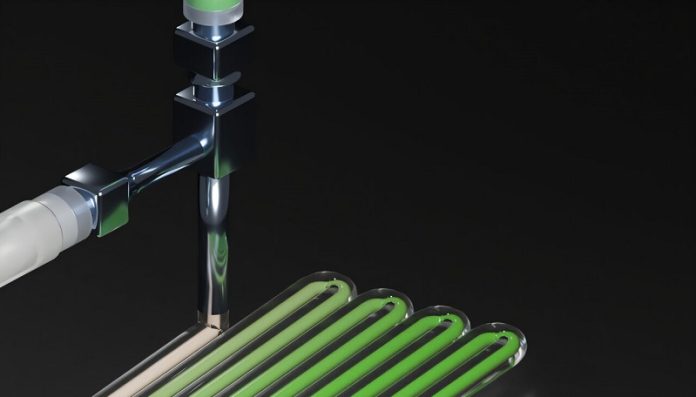
In a breakthrough for smart materials, scientists from several top institutions have developed a new 3D printing method to create color-changing materials that react to pressure and movement.
These advanced materials could one day be used in smart clothing, soft robotics, and next-generation sensors.
The research team—from the University of Pennsylvania, Harvard University, and Lawrence Livermore National Laboratory (LLNL)—used a high-tech printing method called Coaxial Direct Ink Writing (DIW) to print a special type of soft, stretchy material known as cholesteric liquid crystal elastomers (CLCEs).
CLCEs are materials that don’t just stretch—they also change color when you press or pull on them.
They work a bit like mood rings or those aquarium thermometers that change color based on temperature.
But in this case, the color changes based on how much the material is bent or stretched. This is because of the way the material’s molecules reflect light.
By printing these materials into special dome-like shapes, the team was able to create structures that are “multi-stable”—they can hold two or more shapes and switch between them. When the shape changes, the color changes too.
This makes it easy to see where and how the material is being used or stressed.
Alicia Ng and Professor Shu Yang from Penn, along with LLNL engineers Elaine Lee, Katherine Riley, and Caitlyn Cook Krikorian, led the effort.
They teamed up with Harvard researchers Jennifer Lewis and Rodrigo Telles, who helped design the transparent shell used to support the color-changing core.
“It wasn’t easy,” said Cook. “We had to carefully adjust the printing conditions to make sure the colors stayed bright and the shapes were accurate.”
The potential uses for this technology are wide-ranging. LLNL’s Riley said these materials could be used in robotic grippers that snap open and shut, mechanical systems that sense pressure without electronics, or even displays that show color based on physical stress.
For example, you could make clothing that changes color to show how much pressure is applied—or materials in machines that change color to show when they’re under stress or close to breaking.
Looking to the future, the researchers plan to develop more complex versions of these materials, including ones that mimic muscles or adjust their stiffness automatically. They also want to use AI and machine learning to help speed up the design process and test different shapes and uses more quickly.
This innovation brings us one step closer to creating smart materials that see, feel, and respond—without needing electronics at all.



